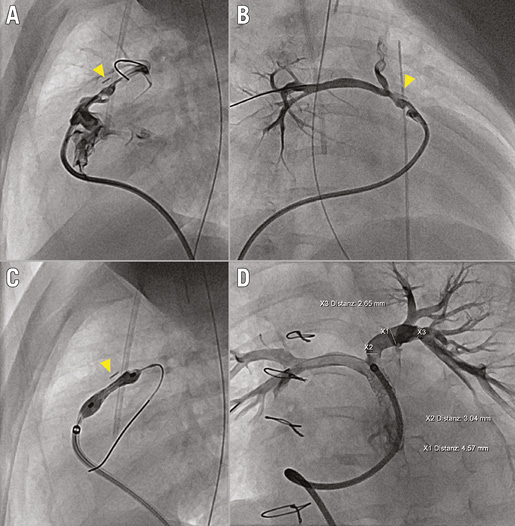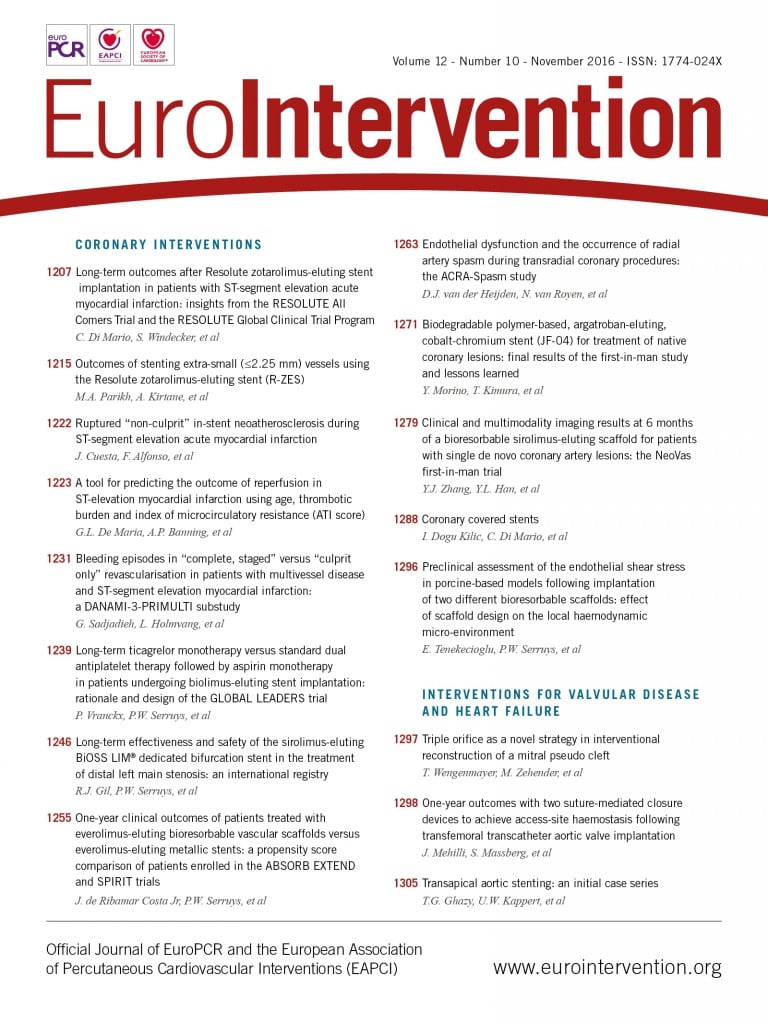

Managing pulmonary atresia with ventricular septal defect and major aortopulmonary collaterals (PA/VSD/MAPCAs) is challenging. Strategies for rehabilitating diminutive native pulmonary arteries may be considered. Right ventricular outflow tract (RVOT) stenting is a promising approach in this situation. We hereby introduce a modified hybrid approach we recently undertook in a neonate weighing 3.31 kg. First, a midline sternotomy was performed, followed by placing a pericardial safety cuff around the native main pulmonary artery (MPA), and a vascular clip serving as a landmark for bifurcation. The chest was left open to permit quick and controlled access to any bleeding site in case of accidental perforation. After transfer to the cathlab, the atretic RVOT tunnel was opened via radiofrequency perforation and a coronary wire advanced to the distal right pulmonary artery, followed by balloon dilation. Selective angiography showed the rudimentary infundibulum and MPA (Panel A, Moving image 1) as well as the diminutive branch pulmonary arteries (Panel B, Moving image 2). RVOT-to-MPA stenting was facilitated by the marking clip (∆) proximal to the bifurcation (Panel C, Moving image 3). Finally, the chest was closed in the operating room. Eight weeks later, follow-up angiography confirmed catch-up growth of the native pulmonary arteries induced by antegrade flow (Panel D, Moving image 4).
Conflict of interest statement
The authors have no conflicts of interest to declare.
Supplementary data
Moving image 1. Angiography infundibulum, lateral view.
Moving image 2. Angiography MPA, RAO.
Moving image 3. Stenting RVOT to MPA, lateral view.
Moving image 4. Follow-up result after eight weeks, LAO.
Supplementary data
To read the full content of this article, please download the PDF.
Angiography infundibulum, lateral view.
Angiography MPA, RAO.
Stenting RVOT to MPA, lateral view.
Follow-up result after eight weeks, LAO.

